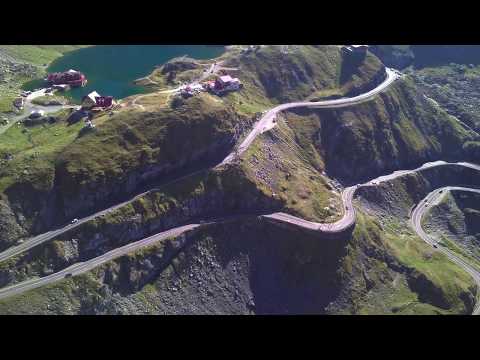
Nestled in the heart of Romania, the Transfagarasan highway, also known as DN7C, is not just a marvel of engineering but a spectacle of natural beauty. Its winding paths cutting through the Fagaras Mountains of the Southern Carpathians provide breathtaking views and an exhilarating experience for travelers and photographers alike. The introduction of real 4K HDR (High Dynamic Range) technology has taken the visual representation of this magnificent landscape to unparalleled levels, offering viewers an immersive experience that closely mimics human eye perception.
### Engineering Marvel Meets Cinematic Beauty
Completed in 1974 under the orders of Nicolae Ceaușescu, Romania’s then communist leader, as a strategic military route, today the Transfagarasan is celebrated as one of the most beautiful roads in the world. Stretching over 90 kilometers and peaking at an altitude of 2042 meters at Balea Lake, it offers a challenging route for drivers and a feast for the eyes with its dramatic vistas.
Capturing this iconic roadway in real 4K HDR video brings out an unprecedented level of detail and color accuracy that standard filming techniques fail to achieve. HDR video enhances each frame to display a wider range of luminosity levels, allowing darker shadows and brighter highlights to coexist with vivid clarity. This results in images that more accurately reflect what you would see in person, making it perfect for showcasing the dynamic landscapes along the Transfagarasan.
### A New Perspective with 4K HDR
The advantage of 4K isn’t just about higher resolution; it’s also about greater pixel quality. Each frame contains more data, providing clarity that allows you to see fine details like dew on morning foliage or subtle shifts in cloud formation over mountain peaks. When combined with HDR’s expanded color spectrum and luminosity range, viewers can experience shades and hues that might be missed by standard cameras.
For documentary filmmakers and travel vloggers focusing on destinations like Transfagarasan Romania, employing real 4K HDR technology means they can deliver content that offers viewers a richly immersive viewing experience. Whether displaying scenes from sunny summer days where every leaf seems greener than ever or capturing storm clouds gathering over snowy mountain caps with stark contrasts between light and shadow – all are rendered with lifelike depth and realism.
### Beyond Visuals: Enhancing Travel Experience
The implications for tourism are profound. Prospective travelers watching a video shot in real 4K HDR can gain a much better understanding and appreciation of what awaits them on their journey along the Transfagarasan highway. For many, this can be instrumental in planning trips or choosing destinations.
Furthermore, such high-quality footage serves educational purposes too; geography educators find great value in showing students clear demarcations between different terrains or explaining natural phenomena under conditions closest to reality. This fosters learning through engagement with content that feels immediate and authentic.
### Conclusion: The Future is Bright (and Incredibly Detailed)
As we move further into an era where technology constantly seeks to bridge gaps between virtual experiences and reality, real 4K HDR represents a significant step forward especially for travel documentation. The way it encapsulates landscapes such as those found along Romania’s stunning Transfagarasan highway not only enhances how we consume media but deepens our connection to places we may never have personally visited.
In conclusion, as more filmmakers adopt real 4K HDR techniques to capture our world’s stunning locales like Transfagarasan Romania, we stand on the brink of experiencing travel documentation that is not only informative but visually transcendent – bringing distant horizons right into our living rooms with astonishing fidelity.
